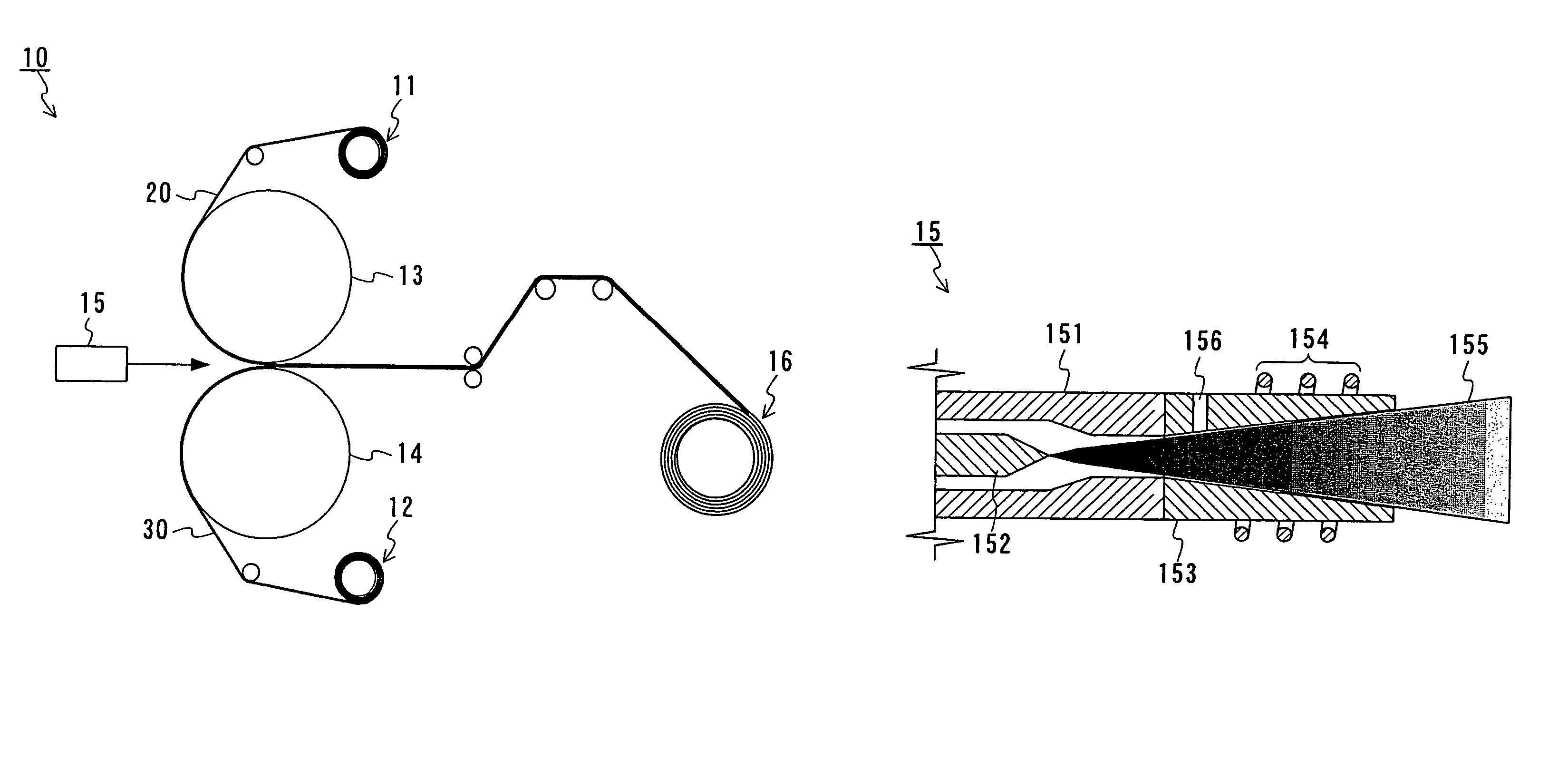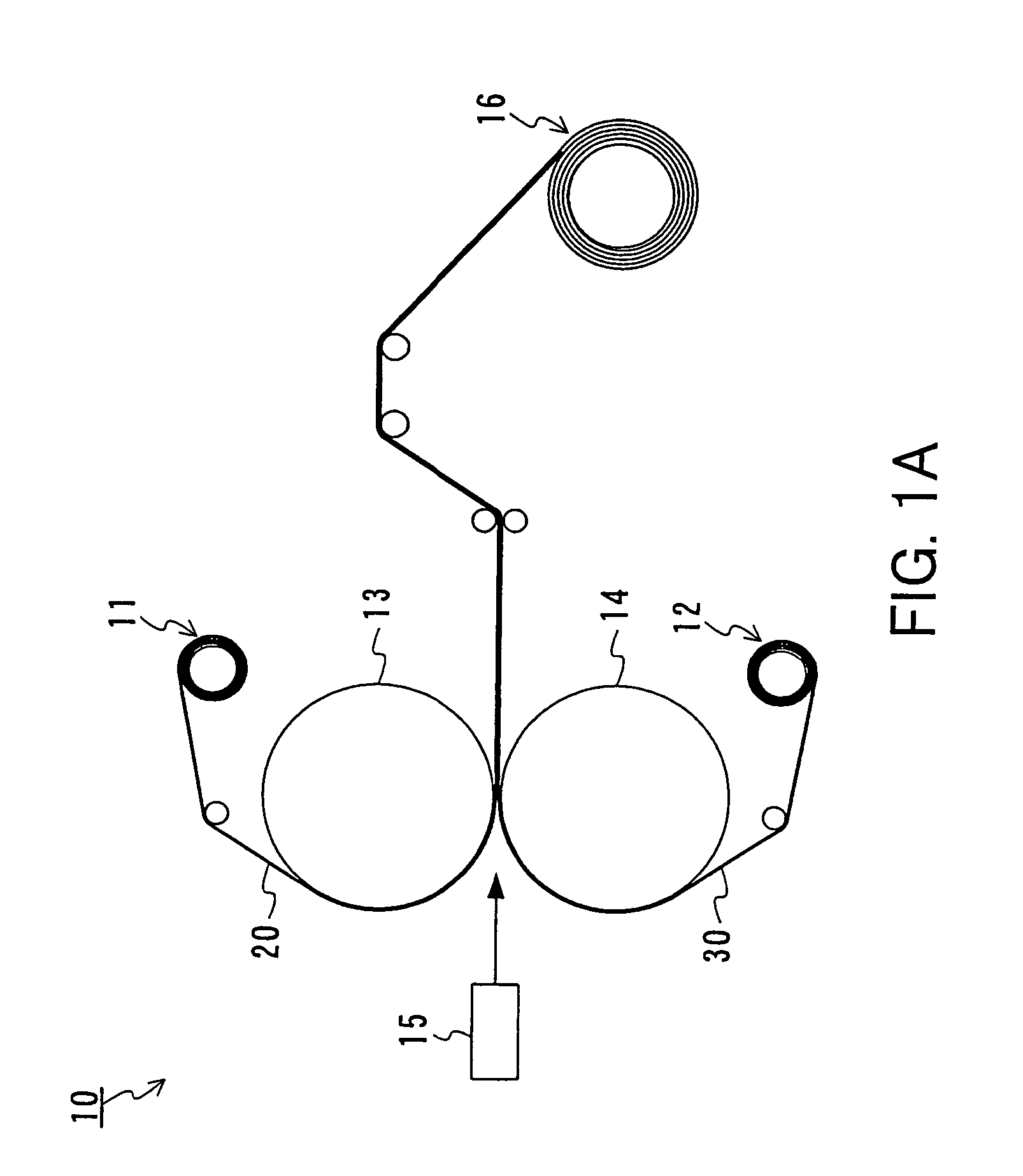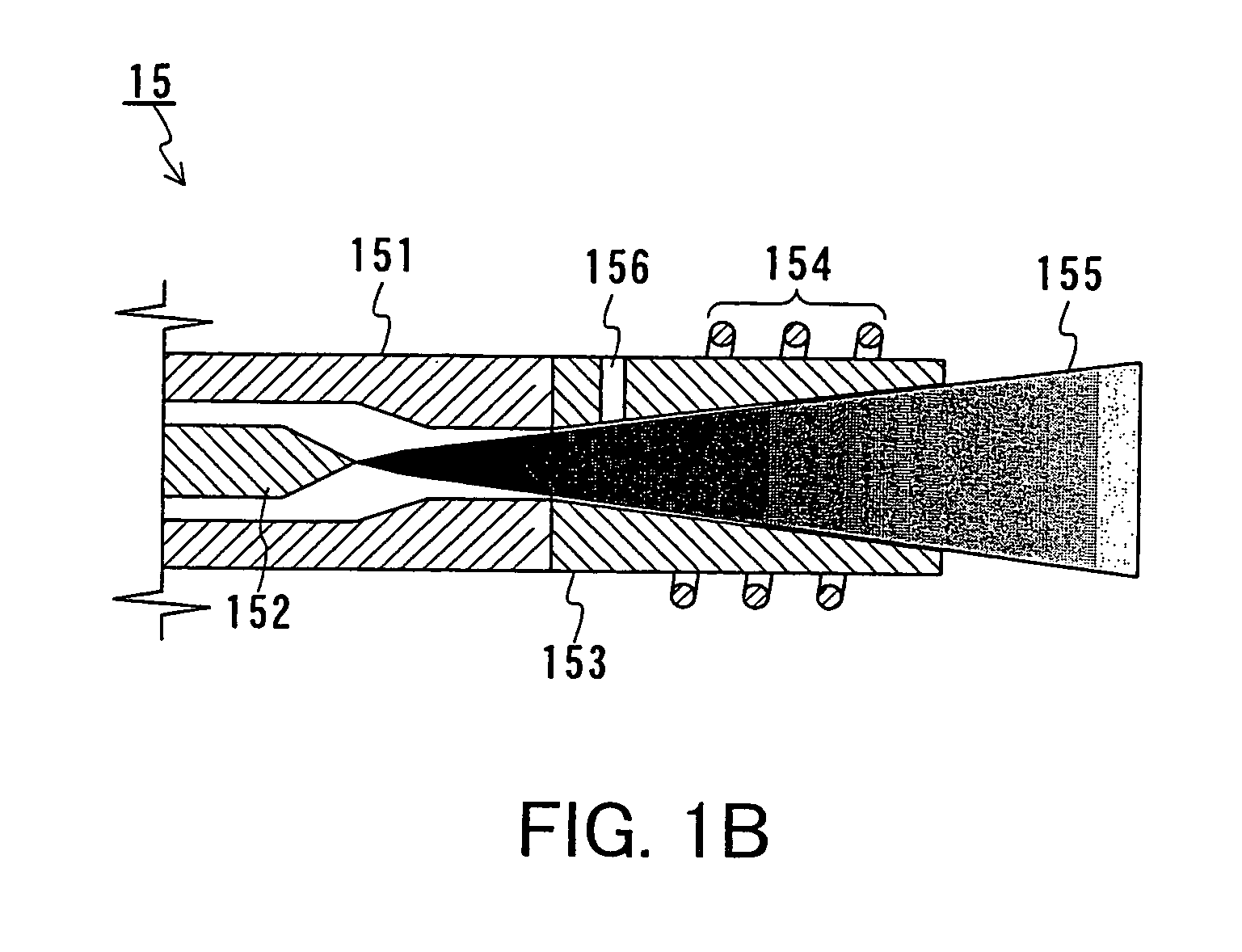Production method of lithium secondary battery and production device therefor
a production method and lithium secondary battery technology, applied in the direction of non-aqueous electrolyte cells, sustainable manufacturing/processing, final product manufacturing, etc., can solve the problems that the deposition technique cannot be carried out with sufficient productivity, and the solid electrolyte with excellent characteristics cannot be formed easily by deposition technique, etc., to achieve excellent characteristics
- Summary
- Abstract
- Description
- Claims
- Application Information
AI Technical Summary
Benefits of technology
Problems solved by technology
Method used
Image
Examples
first embodiment
[0023]The first embodiment is directed to an example of a manufacturing apparatus for manufacturing a lithium secondary battery, according to the present invention. FIG. 1A schematically shows a configuration of a manufacturing apparatus 10 of the first embodiment.
[0024]Referring to FIG. 1A, the manufacturing apparatus 10 includes a feed roller 11 for sending out a positive electrode plate 20, a feed roller 12 for sending out a negative electrode plate 30, cooling rollers 13 and 14, a spraying device 15, and a take-up roller 16. The positive electrode plate 20 and the negative electrode plate 30 are wound around the feed roller 11 and the feed roller 12, respectively.
[0025]The spraying device 15 ejects a melt of a solid electrolyte toward the positive electrode plate 20 and the negative electrode plate 30. Incidentally, although FIG. 1A illustrates the case of ejecting the melt toward both of the positive electrode plate 20 and the negative electrode plate 30, the melt may be ejecte...
second embodiment
[0035]The second embodiment is directed to an example of a manufacturing method for manufacturing a lithium secondary battery, according to the present invention. Although the second embodiment will discuss the case of using the manufacturing apparatus described in the first embodiment, the manufacturing method of the present invention is not limited to this. FIGS. 5A to 5D show a manufacturing process in the second embodiment.
[0036]First, a positive electrode plate 20 as shown in FIG. 5A and a negative electrode plate 30 as shown in FIG. 5B are prepared. The positive electrode plate 20 includes a collector 21 and an active material layer 22 formed on one surface of the collector 21. It should be noted that the active material layer 22 also may be formed on both surfaces of the collector 21. The collector 21 and the active material layer 22 can be those generally used for a lithium secondary battery. For example, the collector 21 can be a collector formed of an electrically conducti...
third embodiment
[0043]The third embodiment is directed to another example of the manufacturing method for manufacturing a lithium secondary battery, according to the present invention. Although the third embodiment will discuss the case of using the manufacturing apparatus 10a described in the first embodiment, the manufacturing method of the present invention is not limited to this. FIGS. 6A to 6D show a manufacturing process in the third embodiment.
[0044]First, a positive electrode plate 20a as shown in FIG. 6A and a negative electrode plate 30a as shown in FIG. 6B are prepared.
[0045]The positive electrode plate 20a includes a collector 21 and active material layers 22 formed on both surfaces of the collector 21. The collector 21 and the active material layers 22 can be those described in the second embodiment. The positive electrode plate 20a can be formed by applying or depositing a material of the active material layers 22 onto the collector 21. More specifically, it can be formed using the po...
PUM
| Property | Measurement | Unit |
|---|---|---|
| Thickness | aaaaa | aaaaa |
| Thickness | aaaaa | aaaaa |
Abstract
Description
Claims
Application Information
 Login to View More
Login to View More - R&D
- Intellectual Property
- Life Sciences
- Materials
- Tech Scout
- Unparalleled Data Quality
- Higher Quality Content
- 60% Fewer Hallucinations
Browse by: Latest US Patents, China's latest patents, Technical Efficacy Thesaurus, Application Domain, Technology Topic, Popular Technical Reports.
© 2025 PatSnap. All rights reserved.Legal|Privacy policy|Modern Slavery Act Transparency Statement|Sitemap|About US| Contact US: help@patsnap.com



